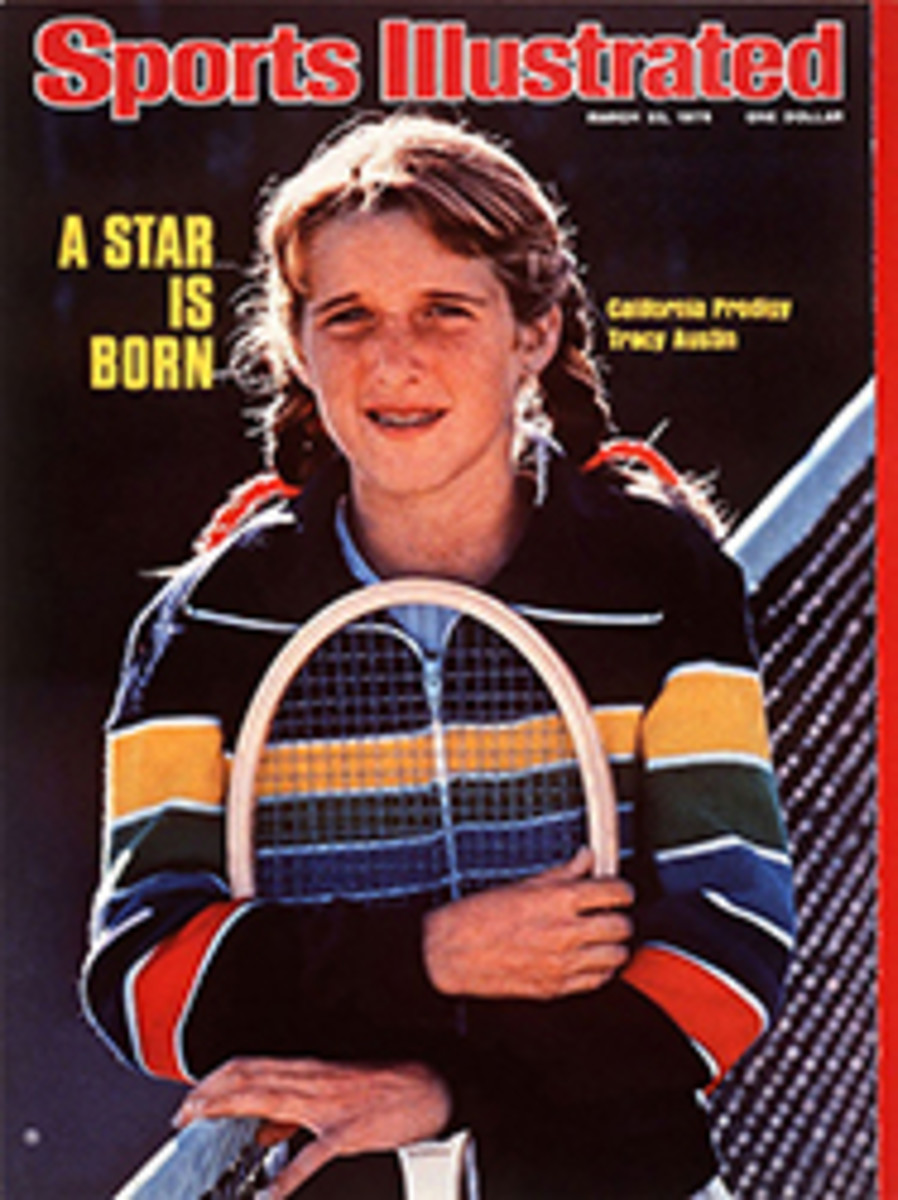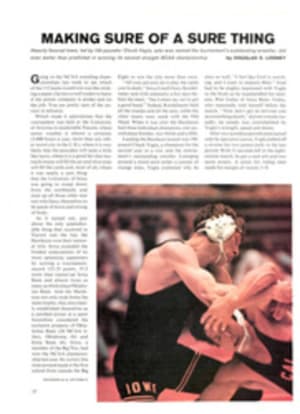
Court case for détente
Last Saturday's World Team Tennis—match between the U.S. and the U.S.S.R., which was held at the Spectrum in Philadelphia, was not a particularly exotic event for the 4,200 American fans on hand. Except for a few of the Soviets, the crowd could tell the players without a program, and, as expected, the U.S. won. This was the third of five rounds of competition between the two teams, and the Americans were now leading by an overall game score of 77-60, an advantage they would increase to 107-77 after whipping the Soviets in Cleveland on Sunday.
It had been an altogether different story the previous Monday night when the six-member U.S. team, led by Billie Jean King and Marty Riessen, opened a two-night stand in Moscow. Tennis has never been a popular pastime in the Soviet Union, there being only 3,500 courts in the entire country, but the Americans found this hard to believe. After their two sessions before packed houses against a largely unheralded group of Russian players, the U.S. team left for home with an unmistakable message: the Russians are coming.
The series was the brainchild of Larry King, president of World Team Tennis, and Bill Bereman, the league's executive secretary and owner of the Indiana Loves. The idea was broached to Vladimir A. Golenko, the affable secretary of the Soviet Lawn Tennis Federation, at Wimbledon early last summer, and the contract was signed on Dec. 27. The agreement called for the first two matches being held in Moscow and the final three in Philadelphia, Cleveland and Indianapolis. World Team Tennis would provide the purse of $100,000, which would be split $60,000 to the winning team, $40,000 to the losers. It was also stipulated that the winning share would go to the team that won the most games, not the most sets.
The first two matches were staged in the cavernous Palace of Sports, which is located in Lenin Stadium Park about two miles from the Kremlin. Twenty-five thousand tickets went on sale about a week beforehand and within an hour all were gone. The spectators were no ordinary collection of tennis fans. A large percentage were tennis coaches, heads of tennis clubs or students at the country's 200 tennis schools. This probably accounted for the uncommonly silent attention with which they followed the proceedings and the complete impartiality of their applause when a noteworthy play was made.
The Soviets, skilled at stagecraft, went all out to dress up the matches. The March of Tennis Players, composed for the occasion, was played. One verse contained the unlikely line, "We are all born with tennis rackets in our hands." Then children presented the contestants with bouquets of red carnations.
If there was a home-court advantage, it was probably the Americans', who had brought along the garishly colored artificial surface used by World Team Tennis, a covering of such clashing hues that the players appeared to be running uphill and down as they traversed the court. There was also some trouble with erratic bounces as a result of the court's being laid directly on top of ice used for hockey matches. Some of the Russian players, whose travel abroad is limited, were playing for the first time before a large crowd, and in their capital city at that, so they were understandably apprehensive. In fact, 22-year-old Marina Kroshina, who had to lead off for the Soviets in the first match, was so nervous that she had to be coaxed onto the court.
Kroshina, a petite blonde, faced the least-known member of "Team America," Mona Guerrant. A member of Bereman's Loves and therefore hardened to the fast pace and pressure of Team Tennis, Guerrant was a model of composure. In a trying first game that went to deuce six times, she eventually broke service and went on to win 6-0. As it turned out, Guerrant's six-game margin provided half of the 12-game advantage the U.S. team carried out of Moscow.
Riessen, playing listlessly, lost to Russia's top player, Alex Metreveli, 6-4. Sandy Mayer lost by the same score to Vadim Borisov, 20, a short player with a big serve. Billie Jean and Rosemary Casals, who had arrived in Moscow only 50 minutes before they took the court, easily disposed of Kroshina and Natasha Chmyreva 6-2. But Chmyreva, a gangling, nerveless 17-year-old, outlasted the weary Casals 7-6. The first night ended with the Americans ahead in games 26-21 but behind in sets 3-2, a fact that caused Moscow newspapers to declare the next morning that the Soviet Union was ahead in a huge upset.
The U.S. coach, Earl (Butch) Buchholz, appeared in the Ukraine Hotel dining room for breakfast the next morning in a forbidding mood. "These people are taking it seriously and they played surprisingly well," he said.
Two days later Vladimir Golenko sat in the Ministry of Sports wearing a satisfied smile. "We are really happy about the match," he said. "It was a meeting of the superpowers held in a very friendly atmosphere."
Golenko had a good reason to be pleased. Soviet tennis is fast increasing in popularity, and it is expected that the U.S.-U.S.S.R. match will give it a further boost. There are now 70,000 players in the U.S.S.R., most of them young. Tennis schools pick out children when they are seven years old. Computers figure their reflex times and eye-hand coordination. When they mature, they are put through a rugged series of intra-Soviet tournaments. Only the best are permitted to go abroad.
Tennis is played in such tucked-away corners of the U.S.S.R. as Samarkand, the ancient Moslem city in Uzbekistan, and Vorkuta, known mainly as the place in the northern Urals to which political troublemakers were once banished. The game is developing into a substantial business, with 140,000 tennis rackets being produced each year at factories in Estonia and the Ukraine.
But the big new product is good young players, and Golenko says the best of all are two 14-year-old girls, Svetlana Cherneva and Olga Zaitseva. "Wait until you see them," he smiles. We can't wait.

